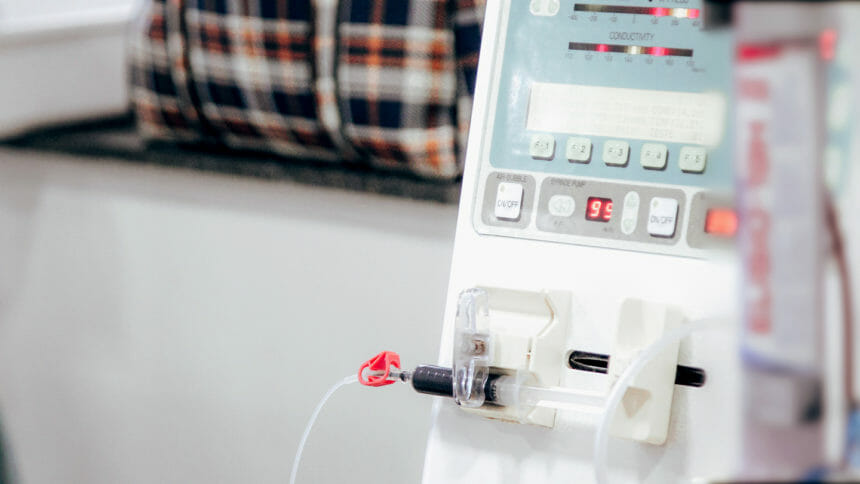
Efforts to increase in-home dialysis in the United States are falling flat, despite financial incentives to encourage the model. That was the finding of a recent study published in JAMA Health Forum.
The randomized study of more than 18,600 patients with end stage renal disease (ESRD) during the first year of the ESRD Treatment Choice Model found the number of new patients getting dialyzing a home within a hospital region receiving financial incentives only increased approximately 0.12% in the first 90 days.
Researchers say the findings raise questions about the efficacy of using financial incentives to encourage home dialysis and whether the size of the incentives will increase in subsequent years.
The Centers for Medicare & Medicaid Services launched the End Stage Renal Disease Treatment Choice Model at the beginning of 2021. The program is intended to save CMS up to $23 million over five years. The program included incentives for participating ESRD facilities and managing clinicians to address health equity among patients. Incentives were also included to reduce disparities for lower income ESRD patients, enabling them to access home dialysis and kidney transplants.
Home dialysis has proven to be more cost-effective than facility-based care. A recent study by researchers at Baylor University College of Medicine found ESRD patients who used home dialysis cost Medicare about 11% less than those who were treated in facilities.
Still, uptake of home treatment has been slow to gain traction. In 2019, approximately 12.6% of ESRD patients in the U.S. were getting dialysis at home, while one-quarter to one-half of patients in Australia, Canada, Hong Kong, Denmark and New Zealand were dialyzing at home.
There are a number of barriers to home dialysis, especially to low-income patients. Many patients lack the in-home support needed to treat themselves at home, while some live in quarters that don’t accommodate home systems.
Innovate Kidney Care, a coalition of healthcare organizations, is lobbying for better training and support for ESRD patients to dialyze at home.



